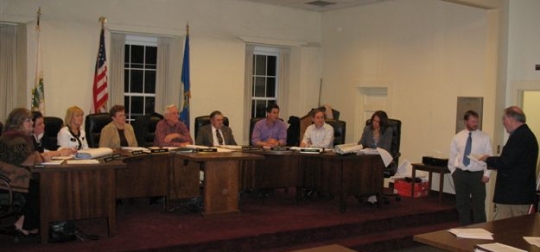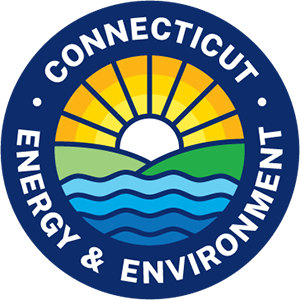Farmington River
Municipal Land Use Evaluation Project (MLUE)
Municipal Land Use Evaluation Project (MLUE)

On October 1, 2008, DEP announced a Request for Proposals inviting Farmington River Watershed towns to apply for funds to conduct a Municipal Land Use Evaluation (MLUE). Funds came from penalties generated by an enforcement order, as a supplemental environmental project. $50,000 was the recommended upper funding limit.
Aid to municipalities has allowed each town to identify potential revisions to current land use regulations and ordinances, to better encourage incorporation of Low Impact Development (LID) techniques in future development. Towns have employed planning and engineering firms to assist with their technical and legal reviews and formed Local Land Use Committees to oversee their Evaluations.
Low Impact Development "LID" is a development design strategy that aims to preserve or restore pre-development water quality and hydrology, principally by infiltrating stormwater to the ground, and reducing effective impervious surfaces. If successful, stream flows will be steadier through dry periods, with sustained groundwater discharges nourishing streams with cooler cleaner flow. Geology, water quality, biodiversity, recreation, cultural landscapes, and land use have all been considered in this regulatory review.
LID design strategies to improve stormwater management might include:
- Reduced road widths or elimination of sidewalks to reduce area of paved surfaces
- Elimination of curbs and gutters to encourage sheet flow across vegetated surfaces
- Impervious pavement surfaces which allow infiltration to the ground
- Depressed islands in cul-de-sacs that allow drainage to infiltrate into the ground
- Zero lot line and reduced front setbacks to allow preservation of green space behind buildings
- Shared driveways to reduce overall area of paved surfaces
- Vegetated swales alongside roadways to remove pollutants and encourage infiltration
Additional information: DEEP LID Municipal Outreach
Each Town's committee had a slightly different makeup, improving the diversity of results to better serve municipal stakeholders. Committee members are listed on each Town's website. Committees were comprised of Municipal government representatives, including but not limited to members of:
- Conservation Commissions
- Inland/Wetlands and Watercourses Commissions
- Zoning Commission including Zoning Appeals Commissions
- Planning Commissions
- Economic Development Commissions
Many Towns chose to include representatives of the regulated community, citizens, or other community organizations in their MLUE Committees to represent all relevant local concerns and ensure that public involvement began early in the regulatory/ordinance review process. In some towns, these members included:
- Academic institutions
- Interested area residents
- Developers
- Construction companies
- Public and private water utilities
- Land Trusts
- Watershed associations
Planning and engineering firms with legal and environmental expertise were hired by each Town to assist local land use committees with technical and legal reviews of issues encountered during design and approval processes, proposed code statute and ordinance revisions, and implementation of these principles in projects. The resulting changes adopted to local land use regulations, will continue to develop, and were different in each town. MLUE committee members made final decisions on how to best address conflicts identified.
Proposed revisions to regulations and ordinances, to eliminate barriers, and encourage the use of LID techniques in future development projects were drafted. The Committees ensured thorough review, by stakeholders and experts, to all changes to regulations and ordinances proposed.
Town-wide meetings were organized to present findings to residents, including, but not limited to summaries of current local town regulations and ordinances that currently restrict use of Low Impact Development techniques, as well as proposed revisions to local regulations and ordinances to encourage Low Impact Development.
Each municipality's approach to revising regulations was unique. The results will better allow concurrent development and protection of water quality, and other natural resources, while providing incentives for land preservation in the Farmington River Watershed.
The diverse lessons learned from this pilot project should assist other communities in Connecticut, as they perform their own Municipal Land Use Evaluations, and consider modifying regulations and ordinances to improve the quality of life in their communities. Efforts will be made to update their progress here, and on the municipal websites listed below:
DEEP presentation to CAZEO conference April 6, 2011 (PDF)
Municipal Websites detailing successful implementation of MLUE
Avon
Barkhamsted
Colebrook
East Granby
Harwinton
New Hartford
Plainville
Simsbury
Torrington
Winchester
Municipal websites will have regulations, ordinances, updates, and/or staff contacts; These "One page summaries" were submitted to DEEP in April 2011.
Content last updated on August 9, 2019

